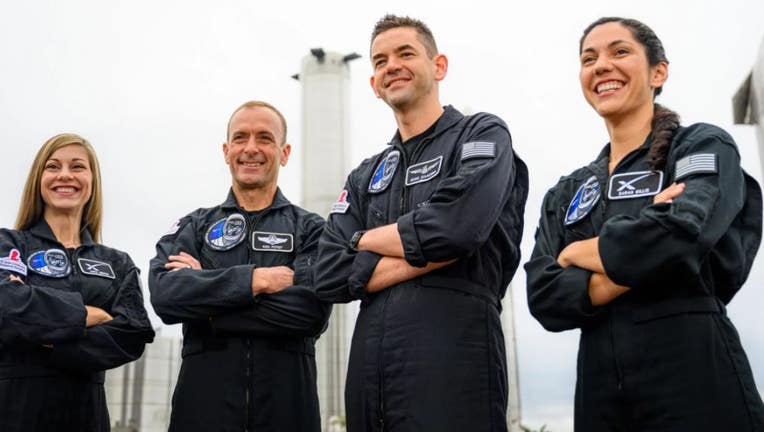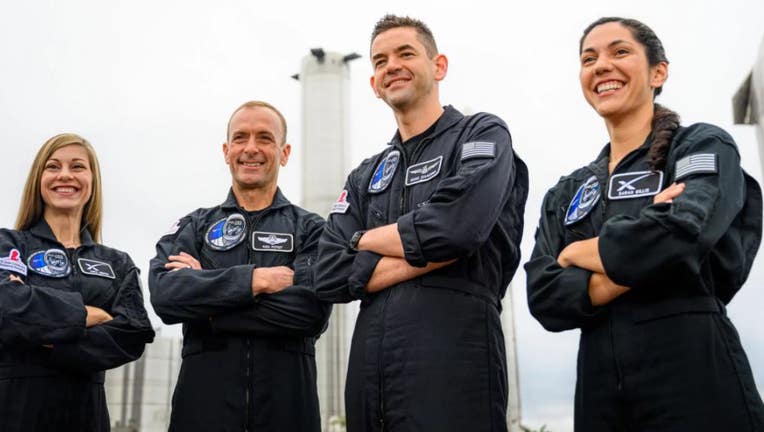
A Closer Look At Polaris Dawn & The First Commercial Spacewalk
It seems each day more and more is happening within the space industry. This includes the development of new companies, fast progress, and unique missions with all sorts of different goals and ideas. SpaceX for example has been responsible for many different ambitious plans including Starship, private missions, NASA contracts, and much more. Recent news shows that SpaceX has no plan to slow down.
Only a few days ago the Polaris Dawn mission was announced. Not long ago Jared Isaacman along with 3 other crew members launched on top of a Falcon 9 and orbited the Earth apart of the Inspiration 4 mission. Now he along with 3 other crew members will once again head into orbit this time to accomplish multiple objectives. These objectives include reaching a high altitude, research, communication, and the first commercial spacewalk, just to name a few. All of which will benefit the space industry and more.
This is just one mission among multiple others each with a specific purpose and goal. In addition, each of these missions also works to support and fund the St. Jude Children’s Research Hospital. This mission is expected to be very exciting and show off a lot of new and unique technology.
What Is Polaris Dawn?

Polaris Dawn is one of three human spaceflight missions that will demonstrate new technologies, conduct extensive research, and ultimately culminate in the first flight of SpaceX’s Starship with humans on board. Specifically, Polaris Dawn endeavors to rapidly advance human spaceflight capabilities to expand our knowledge of humans adapting, living, and working in space. Much of this research also has purpose and applicability to improve life here on Earth. No earlier than the fourth quarter of 2022, SpaceX’s Falcon 9 rocket will launch the Polaris Dawn mission from historic Launch Complex 39A at Kennedy Space Center in Florida. Dragon and the Polaris Dawn crew will spend up to five days in orbit, during which they will work towards the following objectives. These objectives include high altitude, health impact research, the first commercial spacewalk, and in-space communications.
Starting with one of the most ambitious of objectives, this mission is working toward sending humans out into the elements of space on the first commercial spacewalk. At approximately 500 kilometers above the Earth, the crew will attempt the first-ever commercial extravehicular activity (EVA) with SpaceX-designed extravehicular activity (EVA) spacesuits, upgraded from the current intravehicular (IVA) suit. Building a base on the Moon and a city on Mars will require thousands of spacesuits; the development of this suit and the execution of the EVA will be important steps toward a scalable design for spacesuits on future long-duration missions. This is very big news as many of us have seen SpaceX’s intravehicular suit on all of the crewed dragon missions. This suit is meant to help keep the crew safe while onboard Dragon, but is not suited for a spacewalk. This means SpaceX will work to enhance and upgrade its current design and make it safe and convenient for a spacewalk. This is no easy task at all, looking at NASA for example, the agency has had a lot of trouble with delays and funding regarding the development of their new xEVA spacesuit. SpaceX however is known to be very fast and we could see an innovative design in a short period of time. So far the only idea of what this suit might look like is shown in a graphic provided by SpaceX. It shows practically the same suit as the current IVA, with a gold visor and an umbilical attached to the capsule. We will likely see a lot more changes as time goes on to ensure the safety and mobility of astronauts.
The next major objective revolves around reaching a high altitude. This Dragon mission will take advantage of Falcon 9 and Dragon’s maximum performance, flying higher than any Dragon mission to date and endeavoring to reach the highest Earth orbit ever flown. Orbiting through portions of the Van Allen radiation belt, Polaris Dawn will conduct research with the aim of better understanding the effects of spaceflight and space radiation on human health. This will make the astronauts onboard go farther out in space than any human in a very long time. This high altitude also helps with research which leads into the next main objective of the mission.
While in orbit, the crew will conduct scientific research designed to advance both human health on Earth and our understanding of human health during future long-duration spaceflights. Starting with using ultrasound to monitor, detect, and quantify venous gas emboli (VGE), contributing to studies on human prevalence to decompression sickness. Next, they will be gathering data on the radiation environment to better understand how space radiation affects human biological systems. Also, providing biological samples towards multi-omics analyses for a long-term Biobank. Lastly, they intend to research topics related to Spaceflight Associated Neuro-Ocular Syndrome (SANS), which is a key risk to human health in long-duration spaceflight. In addition, SpaceX and Polaris Dawn will also collaborate with the Translational Research Institute for Space Health (TRISH), BioServe Space Technologies at the University of Colorado Boulder, Space Technologies Lab at Embry Riddle Aeronautical University, Weill Cornell Medicine, Johns Hopkins University Applied Physics Laboratory, the Pacific Northwest National Laboratory, and the U.S. Air Force Academy.
The last main objective of this mission that SpaceX highlights is communication and specifically in space communication. The Polaris Dawn crew will be the first crew to test Starlink laser-based communications in space, providing valuable data for future space communications system necessary for missions to the Moon, Mars, and beyond. Communication is an invaluable asset that becomes even more important the farther away from Earth you are. With ambitious future plans for the Moon and Mars, the communication tests on this mission will likely have a direct impact on future human missions to distant planets and more.
Looking at the crew, it starts with Jared Isaacman who is the mission commander. As I mentioned prior, Jared is the same person who helped fund and was responsible for the recent Inspiration 4 mission with SpaceX. He once again has provided a substantial amount of funding for all of the Polaris program missions including this one. You then have Scott Poteet, the mission pilot. Scott “Kidd” Poteet is a retired United States Air Force Lieutenant Colonel who served 20 years. Next is Sarah Gillis, the mission specialist. Sarah Gillis is a Lead Space Operations Engineer at SpaceX, responsible for overseeing the company’s astronaut training program. The last crew member is Anna Menon, she is the mission specialist and medical officer. Anna Menon is a Lead Space Operations Engineer at SpaceX. These are just quick highlights of the crew and their positions.
Conclusion
Not long ago, four civilians were launched on top of a Falcon 9 and sent into orbit as part of the Inspiration 4 mission. Now Jared Isaccman along with a new crew is working towards an even more unique mission. Named Polaris Dawn it involves multiple objectives including a commercial spacewalk, research, communication, and a high altitude. Similar to past missions with Isaccman it involves charity for St. Jude and is meant to be a positive mission in every way. We will have to wait and see how the mission develops and its impact not only on the space industry but on Earth as well.
